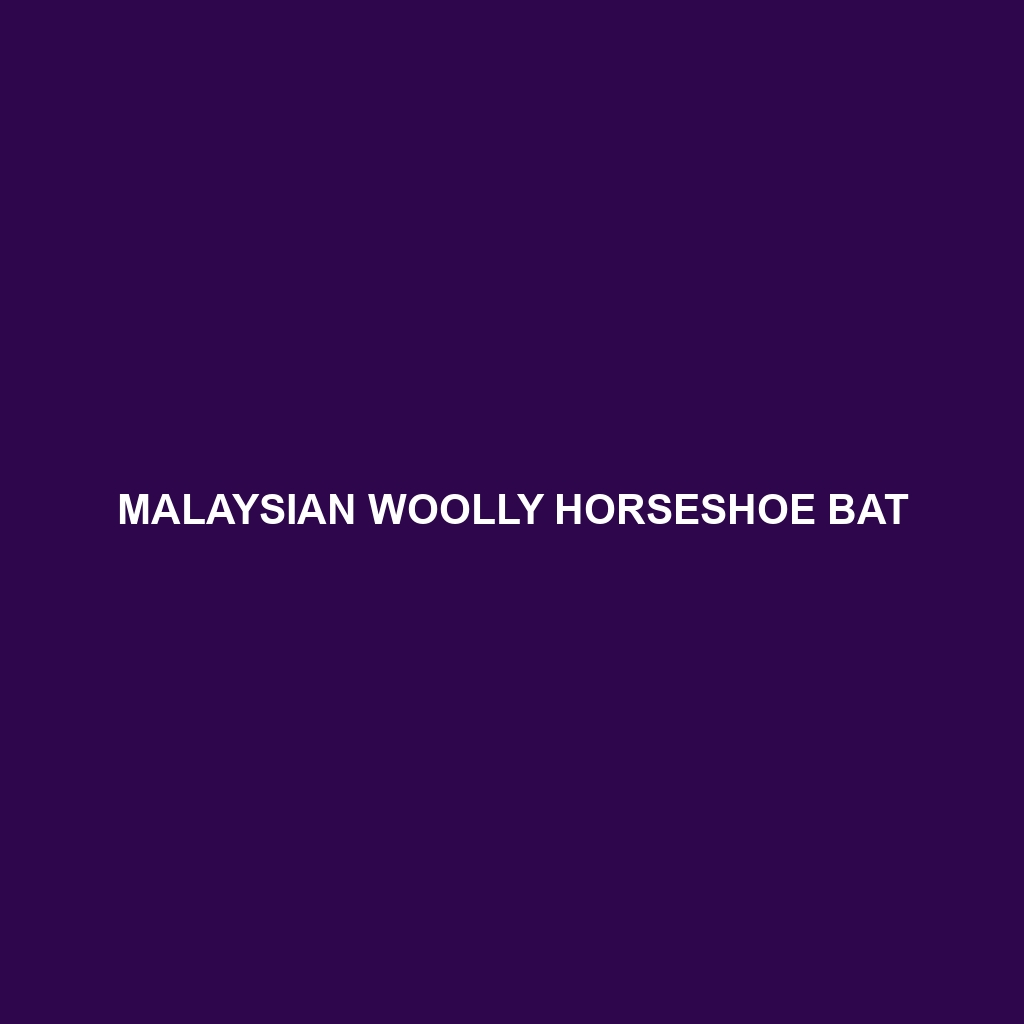Timorese Horseshoe Bat
Common Name: Timorese Horseshoe Bat
Scientific Name: Rhinolophus timorensis
Habitat:
The Timorese Horseshoe Bat is primarily found in the lush forests of Timor-Leste and the surrounding islands of Indonesia. These bats thrive in tropical and subtropical environments, often inhabiting dense, moist forests, caves, and even agricultural areas near their roosting sites. Their preference for these specific habitats is crucial for their survival and contributes to their role in the ecosystem.
Physical Characteristics:
This medium-sized bat typically ranges from 7 to 9 centimeters in body length, with a wingspan of approximately 30 to 34 centimeters. Featuring a distinctive horseshoe-shaped noseleaf, the Timorese Horseshoe Bat exhibits a fur coat that varies from dark brown to yellowish-brown, providing excellent camouflage in their natural habitats. Its large ears and broad wings are adapted for agile flying in dense vegetation.
Behavior:
Timorese Horseshoe Bats are nocturnal creatures, emerging at dusk to forage for food. They are social animals, often found roosting in groups, which can include dozens to hundreds of individuals. Their echolocation abilities allow them to navigate and hunt effectively for insects in complete darkness. These bats exhibit a unique flight style characterized by agile maneuvers, making them adept at avoiding obstacles and capturing prey.
Diet:
The diet of the Timorese Horseshoe Bat primarily consists of insects, with a particular preference for moths and beetles. They employ echolocation to hunt these flying insects in mid-air, showcasing their specialized feeding habits. This dietary choice highlights their role as natural pest controllers within their habitats, making them essential for maintaining ecological balance.
Reproduction:
Timorese Horseshoe Bats typically breed during the wet season, usually between October and December. After a gestation period of around 60 days, females give birth to a single pup. The young bats are born with their eyes closed and are entirely dependent on their mothers for survival. Maternal care is significant, as mothers often nurse their pups for several weeks, teaching them how to hunt and navigate their environment.
Conservation Status:
The Timorese Horseshoe Bat is currently listed as Vulnerable by the International Union for Conservation of Nature (IUCN). Habitat loss due to deforestation and human encroachment poses a significant threat to their survival. Conservation efforts are essential to protect their natural habitats and ensure the stability of their populations.
Interesting Facts:
The Timorese Horseshoe Bat has remarkable adaptations that allow it to thrive in its specific environment. For instance, its unique noseleaf structure enhances its echolocation abilities, making it one of the most efficient hunters among bats. Additionally, these bats are known to form strong social bonds, often seen grooming and interacting with one another in their roosts.
Role in Ecosystem:
As insectivores, Timorese Horseshoe Bats play a vital role in regulating insect populations, thus contributing to agricultural health and ecosystem balance. Their predation helps control pests, acting as natural pest management agents. Furthermore, their presence indicates a healthy ecosystem, making them important bioindicators of environmental quality.
